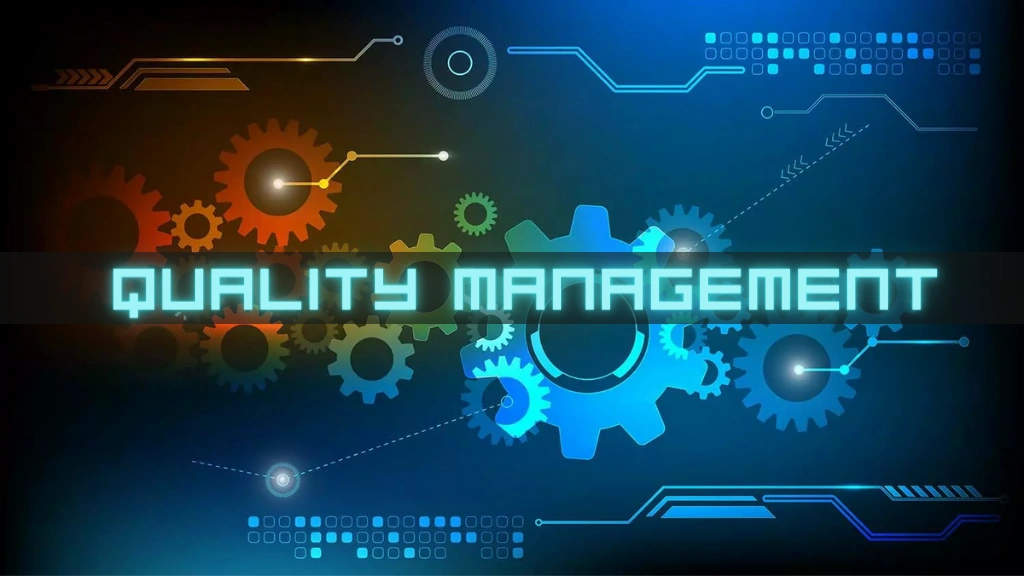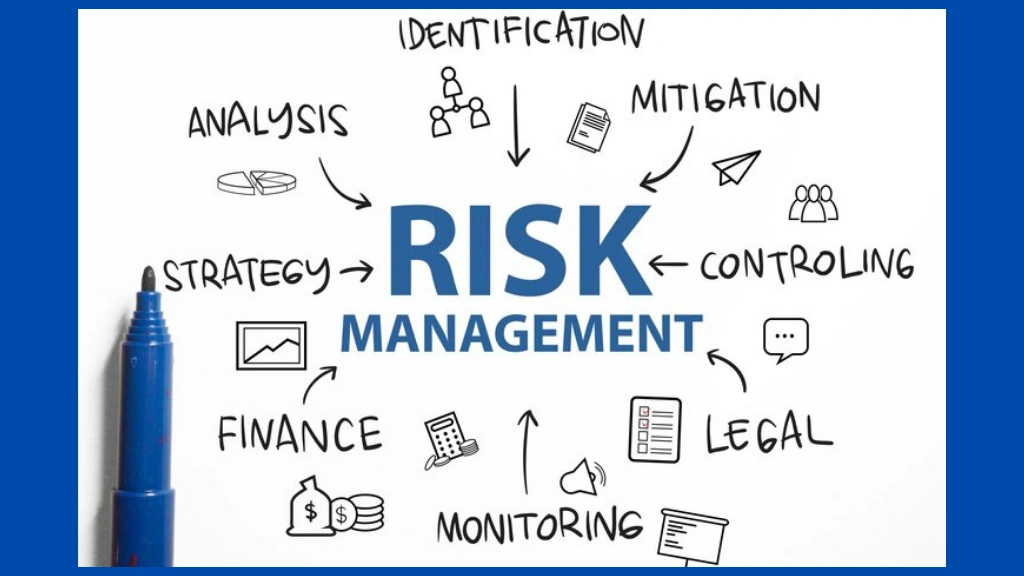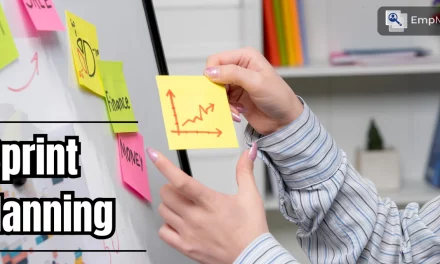Do you often find your projects missing deadlines or losing direction midway? Many managers face this challenge because their planning process isn’t clearly defined. That’s where a solid project plan makes the difference.
The project plan is an essential roadmap, outlining a project’s scope, objectives, and schedule in detail. By learning from successful project plan examples, you can ensure team alignment and understanding by clarifying tasks, deadlines, and responsible parties. This transparent approach aids in managing dependencies, tracking progress, and maintaining productivity.
A well-crafted project plan delineates objectives, tasks, timelines, resources, and milestones, facilitating on-time and within-budget completion. Therefore, an effective idea is needed for project success, providing direction and cohesion.
In this guide, we’ll discuss creating comprehensive project plans that emphasize team alignment and clarity. Practical insights and detailed project plan examples will highlight key components and best practices, promoting efficiency, accountability, and project success.
Before we look at real Project Plan Examples, let’s break down what makes a project plan truly effective.
In a hurry? Listen to the blog instead!
Elements Of An Effective Project Plan:
Before I tell you about some examples of a project plan, let’s understand the elements of an effective project plan. Here, we will discuss its key components that would help you articulate projects and their objectives to manage designated responsibilities. Bringing these elements together helps you manage projects more smoothly and increases your chances of success.
The vital elements of an effective project plan are:
- Executive Summary: Provide a brief summary getting insights into the project’s objectives, the breadth of its scope, and its significance in the broader context.
- Project Goals: Set clear and measurable objectives aligned with overarching business goals, ensuring alignment and focus on contributing factors to achieve specific outcomes that contribute to broader organizational success.
- Vital Responsibilities: Assigning roles and responsibilities to team members and stakeholders, ensuring clear accountability throughout the project.
- Critical Tasks And Outcomes: Specific tasks and actions in the project that would define the outcome its outcome.
- Resource Allocation: Detailing about the availability of resources such as people working on projects, tools and facility requirements, etc.
- Risk Evaluation And Mitigation: Identifying potential threats that may hinder your projects. And accordingly devising strategies to address and prevent them effectively.
- Project Schedule & Milestones: With perfect project planning, you can keep track of the project timeline and its key stages to monitor the project’s success within the deadline.
- Financial Estimates And Budget: It would also help you with cost projections, allocation of funds, and plans for financial management in your ongoing projects.
- Communication Strategies: Another element of project planning is communication. Proper communication among team members and stakeholders ensures effective collaboration and information sharing- essential for any project’s success.
Now that we have learned about the vital elements of an effective project plan, let us comprehend how to create a project plan along with project plan examples.
How To Craft A Project Plan
These are some pointers to help you draft the ideal project plan.
Clarify The Main Aims And Objectives Of The Project:
Clearly defined project goals are crucial for measuring success and maintaining team focus. Employing the SMART criteria—Specific, Measurable, Achievable, Relevant, and Time-bound—provides a structured framework to outline objectives.
This method ensures a clear, actionable plan that drives project success and enhances team alignment. Adopting the SMART approach is essential for any project to achieve its desired outcomes efficiently and effectively.
Set-Up The Success Criteria Of The Project:
You must align success criteria with the project’s deliverables and objectives to measure project success effectively. Ensure that these criteria are quantifiable and reflect the intended outcomes, enabling accurate evaluation of the project’s performance and effectiveness in achieving desired results.
Recognize Key Points In The Project Timeline, Interdependencies, Potential Risks And What Needs To Be Achieved:
To identify project milestones, divide tasks and outcomes, and highlight significant progress points. Consider dependencies for a feasible workflow and identify potential risks by studying project plan examples.
Defining deliverables as measurable results for each project phase ensures clarity and accountability, aiding in successful software project planning and execution.
Allocate Roles And Responsibilities To Both The Team Members And Stakeholders:
Your project’s stakeholders include anyone linked to it. To decipher if someone is a stakeholder, see how much they affect or care about the project’s outcome. It could be because they’re directly involved, the project affects them, or their input can influence it.
Examples of stakeholder groups are:
- Team Members
- Departments
- Customers
- End Users
- Sponsors
- Partners
- Contractors.
Once you know your stakeholders, you can define what they do. It helps structure your project team, ensuring everyone has the right tasks.
You can use a RACI chart (Responsible, Accountable, Consulted, Informed) to show each stakeholder’s involvement. It makes communication and accountability clear, avoiding overlaps or gaps in responsibilities. You can do this by taking cues from project plan examples.
Develop A Timetable And Establish Deadlines:
Creating a schedule and timeline for tasks improves visibility and boosts team productivity. Estimate task durations for reaching project milestones, considering factors like limited resources and task dependencies.
Visual tools like Gantt charts and Kanban boards help map out task dependencies and timelines, aiding in identifying potential bottlenecks.
For this purpose, EmpMonitor serves as a valuable project planning tool, offering customizable columns and cards to streamline project workflow. Its user-friendly interface enables easy visualization and management of tasks, contributing to efficient project management, scheduling, and execution.
Let us learn about this tool and how it can benefit managers, and then learn about a few project plan examples.
EmpMonitor- The Best Employee And Project Management Software
EmpMonitor is a recognized solution for employee monitoring, deftly navigating the delicate balance between safeguarding privacy and driving productivity. Leveraging cutting-edge intelligence and technology, EmpMonitor elevates business efficiency, refining productivity tracking and facilitating seamless project management.
Its focus on efficiency makes project tracking and employee monitoring effortless for teams of all sizes.
With its suite of top-tier project management features; it would meticulously help you organize and manage your tasks and projects, paving the way for heightened productivity and smoother operations.
It’s an all-in-one solution that helps teams streamline workflow and work smarter
Here’s what EmpMonitor offers:
Time-Tracking:
EmpMonitor simplifies time-tracking tasks through automated software, which meticulously records employee activities. Doing so streamlines the process, enhances productivity, and enables effective time management within the organization. This automated system eliminates the requirement of manual input, ensuring precise and reliable data on employee activities.
Workforce Productivity & Engagement:
The software goes beyond mere tracking by actively enhancing employee engagement and productivity. It provides valuable insights into employee efficiency and engagement levels through comprehensive reports. These insights enable managers to identify areas for improvement, implement targeted strategies, and foster a more productive work environment.
Project Management:
Its project management capabilities offer a comprehensive solution for streamlining project planning, task assignments, and real-time collaboration. Ensuring clarity in project objectives, facilitating effective communication, and enabling efficient task allocation, EmpMonitor empowers teams to meet deadlines and effectively manage multiple projects.
Attendance Monitoring:
EmpMonitor ensures accurate recording of employee attendance and leaves through its cloud-based analytics software. With features- like shift scheduling, check-in/out times tracking, and automated timesheets, it simplifies attendance management and provides real-time visibility into workforce availability.
Empowerment for Managers:
The software equips managers with customizable project management tools, enabling them to tailor workflows to suit the specific needs of their teams. In addition to centralizing all data, it provides easy access to relevant information to empower managers to make informed decisions. With this project management software, managers can handle tough projects with ease.
Now that we have learned about this software- let us return to our blog.
Develop A Projected Budget For The Project:
When estimating a project budget, it’s crucial to consider all essential resources required, such as personnel, labor costs, materials, and necessary equipment. By carefully considering these factors, you can develop a comprehensive budget that covers all aspects of the project’s execution.
This budget serves as a financial roadmap, guiding spending decisions throughout the project lifecycle to prevent overspending and ensure efficient resource allocation. Additionally, a clear budget allows for better financial planning and control, ultimately contributing to project success. Learning from effective project plan examples can help you to do this.
Arrange For Effective Communication And Teamwork:
A communication plan outlines how information gets exchanged among stakeholders. For example, a software development project might detail how often the development team shares a beta software version with the client for feedback. This systematic approach ensures consistent updates for the client and specifies communication channels and frequency for all involved parties.
Record The Project Plan:
Gather all relevant planning documents while organizing your project. Key documents include stakeholder analysis, feasibility study, business case, and work breakdown structure. Maintaining these reports in one place offers a point of reference throughout the project’s execution.
With these eight tips, you can create an effective project plan and achieve the best results within the stipulated deadlines.
Now, let’s explore a few examples of project plans.
Project Plan Examples:
A well-crafted project plan is essential for a successful project. But what does a good project plan look like, and how do you create one? Where should you start?
This article will help you create a successful project plan by providing the steps required. Project plans can vary widely in size, format, and components. When it comes to drafting a project plan, there is no particular method.
A well-defined project plan articulates the project’s objectives and the strategies to accomplish them effectively. You’ll find a range of project planning templates online, from very simple to highly detailed.
Following are the examples of how to craft an effective project management plan:
1. For Project Charter Executive Summary:
The Executive Summary of a Project Charter provides a brief overview of the project’s key elements. It summarizes the project’s purpose, objectives, scope, and stakeholders.
This section of project plan examples offers a snapshot of the project, highlighting its goals, expected outcomes, and strategic importance. It ensures that everyone involved gets a clear understanding of the project’s direction and anticipated benefits right from the start.
2. Project Plan Example For Scope Management:
This section covers what is detailed in the first step, “Breakdown the Work.” It includes three subsections:
Work Breakdown Structure:
It includes a detailed outline of the work and sub-work packages and their associated breakdown levels.
Deployment Plan:
This paragraph will cover the rollout strategy if the project calls for distributing an application to state health partners. It includes conducting environmental assessments, creating memorandums of understanding, installing hardware and software, and converting data.
Change Management Plan:
Suppose a development server managed by another organization requires upgrades and has scheduled outages. In that case, this subsection will address how to adjust the project to accommodate these outages and mitigate their impact on the project schedule.
3. Project Planning for Schedule Management:
This section of project plan examples focuses on ensuring the project stays on schedule. It includes the results from sections 4 and 5 of this article. One way to manage a schedule would be to set a baseline during the first two weeks and track each week’s progress against it.
The project manager will ensure that the schedule is updated with the most recent data and is never older than three working days. For any executive milestone variances of more than 10%, the project may follow CPIC guidance.
4. Management Of Cost & Budget:
This section of the sample project plan outlines the project’s cost management plan or indicates where it can be found. It provides a comprehensive approach to managing the project’s budget and expenses.
It describes the methods used to estimate costs for each task, ensuring accurate budgeting and financial planning.
This part of the project plan examples ensures that all financial aspects are thoroughly considered and managed throughout the project lifecycle, providing a clear reference for cost-related decisions and adjustments.
5. Management of Quality:
This section of the sample project plan outlines the project’s quality management approach, as covered in step two of this article.
All screens in an information system must meet the agreed quality standards. Quality measures include having no critical defects, consistent screen layouts, and accurate calculations. Project managers can ensure quality by performing inspections, audits, and formal testing.
The project management team should document defects in a tracking system to ensure they are fixed, retested, and closed. The project manager might use a traceability matrix to verify that critical requirements are met.
6. Resource Management:
This section describes the resource management approach discussed in step 5 of this article. It outlines how resources, including personnel, equipment, and materials, will be allocated and managed throughout the project.
This section ensures that the right resources are available at the right time to meet project objectives and includes strategies for resource planning, scheduling, and optimization to ensure the efficient use of all resources involved in the project.
7. Communication Management:
Communication channels and methods are outlined in this section, along with a comprehensive communication plan.
It specifies how information should be shared, how often communications will occur, what formats will be utilized, and what is expected of team members to maintain effective communication. This part of project plan examples ensures that all stakeholders are informed and engaged throughout the project lifecycle.
Also Read:
6 Easiest And Most Effective Ways To Manage Projects
Task And Project Management: Insider Tips For Success
7 Smart Ways To Tackle Challenges In Project Management
Project Baseline: What It Is, Why It Matters, And How To Set It Up
8. Project Plan Example For Risk Management:
This section lists all risks identified in any part of the project, primarily focusing on the Risk Log. Typically, project managers keep the risk log separate from the project management plan in a different document. However, the project manager may combine various logs into a single document that includes all the various logs.
9. Management Of Issues:
This section of project plan examples lists all issues identified in any part of the project, primarily focusing on the issue log. Project managers usually maintain the issue log separately from the project management plan in another document. The project team may also combine the issue log with other logs, such as the risk, assumptions, and constraints log, into a single document.
10. Procurement Management:
This section typically includes information about physical and human resources that can be procured. It ensures proper planning and management for acquiring hardware such as computers, development servers, and test servers. It also explains how to utilize project team members from external vendors and may detail strategies for acquiring project staff.
11. Compliance Planning:
This section of sample project plans includes a list of processes related to compliance that the team working on the project needs to adhere to to comply with business regulations. Additionally, describe the governance bodies that oversee the project or review the product deliverables.
This section should also specify the timing of governance-related reviews and audits, with the audit standards and acceptance criteria. Furthermore, it should detail who is authorized to perform audits and how they will be conducted.
How To Create A Project Plan
Building a well-structured project plan is more than just outlining tasks—it’s about aligning goals, people, and timelines to achieve results efficiently. Whether you’re handling small internal projects or complex client deliverables, following a systematic approach ensures nothing slips through the cracks. Below are practical steps to help you create an effective plan, along with real-world project plan examples and how EmpMonitor can make each stage more manageable.
1. Define Your Project Objectives
Start by identifying what the project aims to achieve. Clear objectives set the foundation for success. Break them down into measurable outcomes—like completing a new website launch, improving team workflow efficiency, or meeting a product delivery deadline.
Pro Tip:
Use EmpMonitor’s productivity tracking reports to review past project data. It helps you identify where teams excelled or struggled, making it easier to set realistic goals this time.
2. Outline the Project Scope
Define the boundaries of your project—what’s included, what’s not, and who’s responsible. A well-defined scope prevents scope creep, ensuring your team focuses on what truly matters.
Pro Tip:
With EmpMonitor’s activity insights, you can track task allocation and confirm that team members are spending time only on project-related activities.
3. Identify Roles and Responsibilities
Assign clear roles to each team member. This not only fosters accountability but also helps maintain balanced workloads. Everyone should know exactly what they are responsible for and how their contribution affects the overall project.
Pro Tip:
Use EmpMonitor’s team analytics dashboard to view employee workload distribution and productivity levels—ensuring fair task assignments and efficient collaboration.
4. Create a Realistic Timeline
Every strong plan includes a clear timeline with milestones. Break down your project into phases and assign deadlines to each. Having milestones helps you monitor progress and stay aligned with overall objectives.
Pro Tip:
Track progress using EmpMonitor’s automated time tracking feature, which records the time spent on each task—helping project managers compare planned vs. actual timelines effortlessly.
5. Allocate Resources Wisely
Resources—whether time, tools, or team members—must be allocated strategically. Evaluate the skill sets of your team, estimate workload capacity, and ensure that all required resources are available before initiating the project.
Pro Tip:
Leverage EmpMonitor’s resource utilization reports to assess team availability and productivity trends, so you can allocate work based on performance insights.
6. Identify Risks and Create Contingency Plans
Every project carries potential risks—delays, miscommunication, or budget issues. Anticipating these risks early helps you stay prepared. Build contingency measures for high-priority risks so your team can adapt quickly.
Pro Tip:
Monitor early warning signs through EmpMonitor’s productivity and attendance data, which can highlight performance dips or engagement drops that may lead to project slowdowns.
7. Track Progress and Communicate Regularly
A project plan is only effective if it’s actively monitored and updated. Conduct regular check-ins to evaluate progress, resolve bottlenecks, and realign goals if needed. Open communication ensures everyone stays on the same page.
Pro Tip:
Use EmpMonitor’s live dashboard to view real-time updates on task progress, performance insights, and team activity levels—all in one place.
8. Review and Document Project Outcomes
Once the project concludes, evaluate outcomes against initial goals. Identify lessons learned, successes to replicate, and areas for improvement. This documentation becomes a valuable reference for future project plan examples and continuous process enhancement.
Pro Tip:
Generate custom performance reports through EmpMonitor to analyze project efficiency and productivity, helping you refine strategies for upcoming initiatives.
Project Plan Examples by Industry
Every industry approaches project planning differently, depending on its goals, team structure, and execution process. To make project planning more actionable, here are some Project Plan Examples tailored for various industries. These examples illustrate how teams can structure their projects efficiently, meet deadlines, and maintain accountability across departments.
1. Project Plan Example for Software Teams
For software development teams, the key lies in balancing deadlines, testing cycles, and collaboration between developers, QA engineers, and project managers.
A typical project plan for a software team includes:
-
Objective: Launch a new feature or product release within a defined sprint timeline.
-
Milestones: Requirement gathering, prototype creation, coding phase, testing, and deployment.
-
Resources: Developers, testers, UI/UX designers, and DevOps support.
-
Tracking Tools: Time tracking, productivity analytics, and bug-tracking dashboards.
With EmpMonitor, software teams can monitor progress in real time, track productive hours, and identify workflow delays early — helping managers ensure every sprint stays on schedule and within scope.
2. Project Plan Example for Marketing Campaigns
Marketing teams often juggle multiple campaigns across platforms. A structured project plan helps them coordinate creative, content, and ad operations effectively.
A marketing project plan typically includes:
-
Objective: Launch a multi-channel campaign promoting a new product or event.
-
Milestones: Content creation, design approval, ad setup, performance tracking, and reporting.
-
Resources: Designers, copywriters, ad managers, and analysts.
-
Deliverables: Social media creatives, landing pages, ad copies, and reports.
EmpMonitor enables marketing managers to track team activity, review campaign progress, and manage performance insights — ensuring campaigns go live smoothly and deliver measurable results.
3. Project Plan Example for HR Onboarding
HR projects are people-centric and require close coordination between departments. A project plan ensures every step in the onboarding process is clear, timely, and efficient.
A standard HR onboarding project plan includes:
-
Objective: Seamlessly onboard new employees while ensuring all compliance steps are completed.
-
Milestones: Offer acceptance, document collection, system setup, orientation sessions, and initial performance reviews.
-
Resources: HR managers, IT support, team leads, and training coordinators.
-
Tracking: Task completion checklists and onboarding timelines.
Using EmpMonitor, HR teams can automate attendance tracking, monitor employee activity, and maintain onboarding documentation digitally — creating a transparent and productive start for every new hire.
Conclusion:
In the end, the difference between a missed deadline and a successful delivery often comes down to one thing — how well you planned it. Using tools like EmpMonitor helps turn that plan into measurable progress.
This structured approach ensures that all aspects of the project are considered and managed effectively, from risk and issue management to communication and compliance. Utilizing a project planning software like EmpMonitor can help tackle the challenges in project management and enhance productivity.
By following the guidelines and the project plan examples provided in this article, you can create a comprehensive project plan that promotes efficiency, accountability, and successful project outcomes. A well-crafted project plan aligns team efforts and increases the likelihood of completing the project on time and within budget.
Project Plan FAQs
What Is A Project Plan?
A project plan outlines tasks, timing, and resources to meet goals within scope, often visualized as a Gantt chart. It details deliverables, team roles, milestones, and stakeholder feedback timelines.
What To Include In A Project Plan Example?
All project plans share key components: detailed tasks, visual schedule with timelines and progress, key milestones, dependencies between tasks, and resource assignments indicating responsible individuals or teams.
What Is The Need To Write A Project Plan?
A good project plan builds consensus, avoids scheduling conflicts, monitors goals and scope, and holds the team accountable. It ensures clear understanding, organizes tasks and keeps objectives and expectations in focus.



















